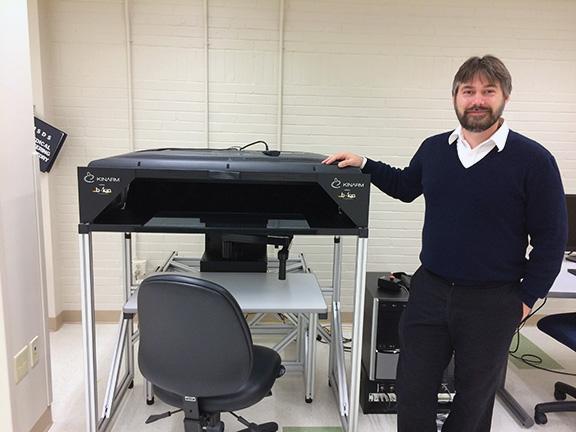Gannon University’s cutting-edge biomedical engineering program was recently granted accreditation by the Engineering Accreditation Commission of the American Bureau of Engineering and Technology (ABET), making it one of only seven programs in Pennsylvania to have this accreditation.
Davide Piovesan, Ph. D., and director of Gannon’s biomedical engineering program, said that biomedical engineering is a fairly new field of undergraduate study.
Usually the path for a person wishing to become a biomedical engineer was to get an undergraduate degree in mechanical or electrical engineering and then to get a master’s in biomedical engineering.
Piovesan said that the market for engineers has been extremely interested in people coming out of a biomedical engineering program at the undergraduate level.
Piovesan said that there are a few different things that contribute to Gannon’s state-of-the-art program, one of them being class size.
“We take care of our students,” Piovesan said. “You’re not a number when you come to Gannon.
“My doors are always open and people come in and out. There’s that sense of family that really helps the environment.”
Piovesan also said that another thing that sets Gannon apart is the facilities that are available.
“We have a very nice lab,” Piovesan said. “Within the surrounding area, we are an excellent center. [It] has a lot of potential.”
Piovesan said that one of the major components of the lab is that they not only teach the math, physics and mechanics of biomedical engineering, but they also physically teach how the brain controls movements.
“If you want to produce prosthetics, you need to know how your thoughts are transferred into movement,” Piovesan said.
“Kinesthetic learning is one of our goals. It gives students the possibility to have a comprehensive way of learning things.”
The engineering lab, which is divided into three sections, has portions dedicated to robotics, bicycling and motion tracking.
The robotics lab contains two pieces of equipment designed to help biomedical engineers.
The first piece of equipment is a robotic machine that was conceived to help people in the rehabilitation process.
The machine works with a virtual reality system that applies a force that is minimally assistive, which is very engaging for the patient.
The other piece of equipment is a machine that was designed to measure the properties of the different joints in the human body.
In the cycling lab, the idea is to research movement of triathletes, who bike differently than normal people.
The system measures how people pedal and also measures what muscles are used when doing so.
The motion tracking lab has a few different systems. In the expensive, state-of-the-art system, sensors transmit motion paths from different parts of body and measure where limbs are in space.
Piovesan said that this technique is what is used in Hollywood to transform humans into different CGI characters, such as in “Avatar.”
For the purposes of biomedical engineering, students fit a skeleton, with the muscles attached, into the movement path.
This creates a sort of virtual marionette that is helpful to track movement, see different muscles in action and get measurements of position and force.
One of the projects that they are working on right now is using a GoPro system as a tool for measuring movement.
Piovesan said one of the unique features of the GoPro is that it can film under water.
He says their hope is to eventually be able to track the motions of people who are swimming.
Lillian Blum, a sophomore mechanical engineering major, is one of the students who is helping to work on this project.
“I really like [the project] because I get to do actual hands-on stuff in the lab,” Blum said. “There’s so much background information to learn that I haven’t even gotten to the first step [of the project] yet.”
“It can be frustrating, but it’s exciting and really rewarding.”
SAMANTHA GRISWOLD












